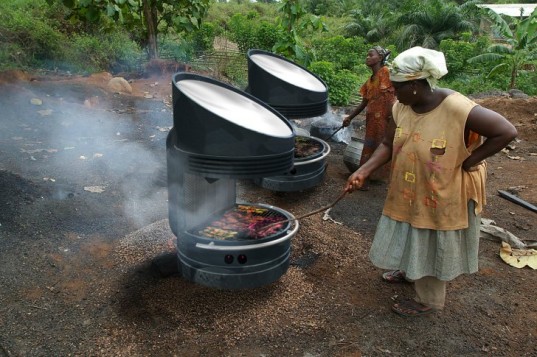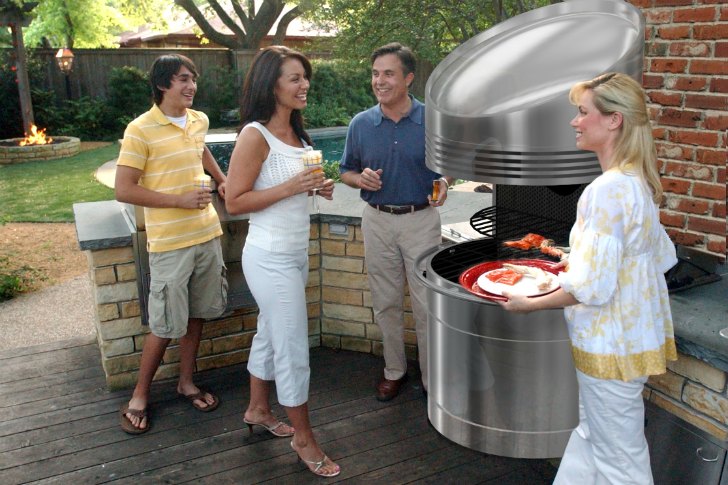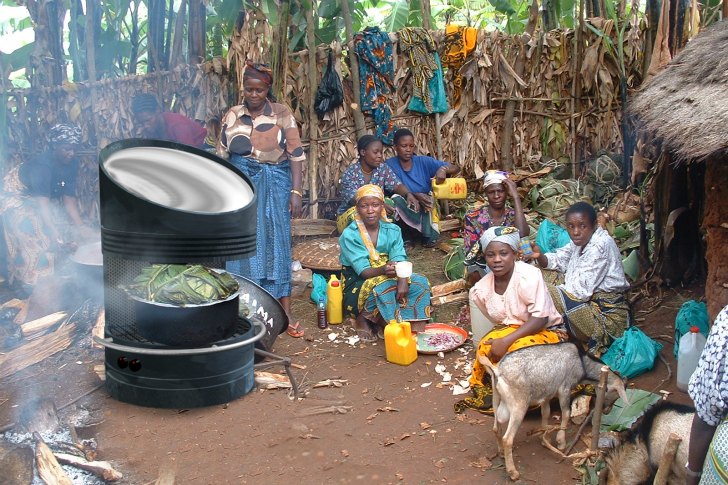Based on the technology from MIT professor David Wilson, this grill would collect thermal energy from the sun and store it to allow cooking times for up to twenty five hours at temperatures above 450 degrees Fahrenheit. The study is being conducted by Derek Ham, Eric Uva, and Theodora Vardouli, all part of an entrepreneurship course called “iTeams.” I-Teams, (short for “Innovation Teams”) is a unique MIT course that assembles cross-disciplinary teams of students from across MIT. The goal of i-Teams is to teach students the process of science and technology commercialization focusing on how to judge a technology’s commercial potential. Each team has access to faculty, practitioners, business mentors, and fellow students throughout their project.

“There are a lot of solar cookers out there,” says Wilson, “but surprisingly not many using latent-heat storage as an attribute to cook the food.” Wilson’s technology uses a Fresnel lens to harness the sun’s energy to melt down a container of Lithium Nitrate. The Lithium Nitrate serves as a solar battery. Due to its phase change reaction, the thermal energy is able to be stored at longer periods of time and at higher temperatures. Heat is then redistributed through convection, which allows for outdoor cooking.

This study is very timely because although the students are creating a new grill for American backyards, the business plan is designed to allow the grills to be deployed in developing countries as an alternative source for cooking. Wilson originally came up for the idea during his time spent in Nigeria. While there he noticed a large set of problems linked to practice of cooking with firewood. These problems include reports of women being raped during their daily search for firewood, constant increase in deforestation, and respiratory health issues due to the daily inhalation of smoke in closed proximities. According to the United Nations Statistics Division, 55 percent of households in sub-Saharan Africa depend on firewood. In developing countries this Solar Grill would become a solution to a growing need.

In the US market, according to the Barbecue Industry Association, about 75 percent of all U.S. households owned a barbecue grill in 1999, and 40 percent owned more than one. To respond to the demands of the American public, the proposed US model would be a hybrid system of both propane and solar cooking capabilities. This would allow you to have your flame kissed meat as well as the ability to slow roast corn from the thermal convection. Currently the technology is in its prototype stage, but if all goes well in a few years you might be able to have Solar-Cooked food at your next barbecue.

The students are currently taking a market survey on this technology via Survey Monkey. You can visit and take their survey at: http://www.surveymonkey.com/s/GPNRXNJ
Post Submitted By Derek Ham
MIT Solar Barbecue iTeam
Source: barbequelovers.com